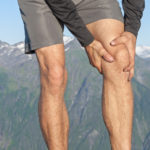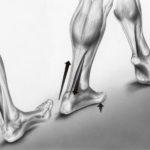Effect of Zero Drop Shoes on Biomechanics and Injury Rates
A zero drop shoe is not enough to alter running biomechanics in cushioned shoes, but may affect injury rates in some runners.
Findings from a recent study suggest that, although barefoot running by definition involves zero drop from heel to toe, other shoe design features play a more significant role in barefoot-like running. Investigators from the Luxembourg Institute of Health randomized 553 runners to six months of running while wearing one of three experimental, cushioned shoes with varying degrees of shoe drop: 0, 6, and 10 mm. The zero-drop shoes had a 21 mm cushioned sole. For the group overall, during six months of running in the experimental shoes, there were no significant differences in injury rates among the runners. However, there were small differences in injury rates between occasional runners and regular runners. The researchers concluded, “It seems safe to recommend low-drop shoes for occasional runners but not regular runners.”
While this study demonstrated increased injury risks in regular runners, the results do not indicate that runners should avoid zero-drop shoes. In fact, evidence in the medical literature points to self-selection as the best criteria when selecting a running shoe – use the shoe that feels best on your feet. If a zero-drop shoe works best for your running style, then stick with it. Other research evidence, however, is pretty clear in pointing out that altering individual components of a shoe does not consistently alter a runner’s injury risk or the biomechanics of running. This is true for midsole thickness, shoe stiffness, or in this case the heel-to-toe drop. Therefore, caution should be exercised when selecting a shoe based upon any one component. Now, there is evidence that injury rates differ among some runners when several components of a shoe are changed, not just individual components. These differences have been noted when comparing runners using minimalist, neutral, stability, or motion control shoes. These differences must take into account an individual runners foot posture and biomechanics and it takes a trained eye to determine if one shoe type is better than another for a runner. Our recommendation is to use fit and comfort as the two primary guides when selecting a shoe, but don’t be afraid to try out different brands and models. You never know what the next shoe may feel like when you run.

 Previous Post
Previous Post Next Post
Next Post
